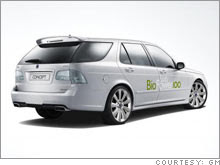Japan rolls Li-ion battery safety plan

Tokyo -- Tales of burning notebook PCs that hit the news last summer raised serious concerns among consumers about the safety of lithium-ion batteries. Responding to those fears, Japan's battery and PC industries have jointly hammered out guidelines for the safe use of Li-ion batteries. The industries' task force has also presented its proposal to the International Electrotechnical Commission (IEC).
"We have worked hard since last October for lithium-ion battery safety. The resulting guidelines are designed to eliminate serious problems, such as catching fire," said Masami Yamamoto, corporate vice president of Fujitsu Ltd., who chaired the safety committee formed last fall by the Japan Electronics & Information Technology Industries Association (JEITA) and the Battery Association of Japan.
As the next step, the team intends to expand the guidelines beyond notebooks to other applications, such as cell phones.
The guidelines are not intended to clarify the cause of each overheating problem that cropped up last year or to offer practical solutions in specific cases--countermeasures are the responsibility of each supplier, said Kensuke Nakatani, chairman of the portable rechargeable-battery division of the Battery Association of Japan (BAJ). "The guidelines are not for the treatment of each case, but represent precautions."
The guidelines cover three major areas: battery cell design, battery package design, and test and evaluation criteria. The BAJ team worked on the cell design requirement and the JEITA team on package design. Then the teams worked together to compile the other guidelines.
According to the document, it is fundamental for battery makers to establish production processes that do not allow foreign metal particles to enter into battery cells. Such mingling will cause an internal short-circuit.
If an internal short-circuit should occur, the guidelines require that manufacturers maneuver cell structures and materials in such a way that the battery cells would not overheat easily. The effect of the scheme chosen to accomplish that needs to be verified under the test-and-evaluation methodology that the proposal defines.
The guidelines also define the safety range for each battery cell. For widely used lithium-ion battery cells with LiCoO2 anodes, the guidelines set the highest voltage for charging at 4.25 V. The operating temperature range is 10°C to 45°C.
The high-voltage limit was set based on the reversible reaction of LiCoO2 crystal-lattice transformation. Beyond 4.25 V, the lattice is destroyed and shows no reversibility.
"The guidelines define the highest chargeable voltage but do not define how to charge. That's up to the PC vendors," said Koji Sekai, deputy general manager at Sony Corp.'s energy business group.
If they comply with this guideline, however, PC vendors would find it virtually impossible to offer high-speed charging, since that usually demands a higher voltage than the one normally used.
Battery cell test is generally done during the production process. To increase safety, the Japanese guidelines propose adding a new test using a charged cell. In between the electrodes, a metal particle is intentionally inserted and pressed to generate a short-circuit. The test will make it possible to observe the behavior of the cell with an internal short-circuit.
Li-ion batteries are not used alone in notebook PC applications. Instead, multiple cells are ganged together in a package. Usually, two cells are arranged in parallel to form a block and several blocks are connected serially. Hence the guidelines' discussion of battery pack design requirements.
The guidelines detail ways to avoid thermal runaway, such as block layout, precise charging-voltage control on a per-block (not per-package) basis and separation of the control circuit board from battery cells.
JEITA and BAJ have proposed, via the subcommittees of IEC in Japan, that their document be sent to the IEC SA-21 and IEC TC-108 committees.
Original news


Comments